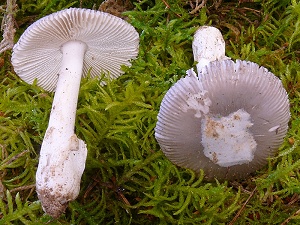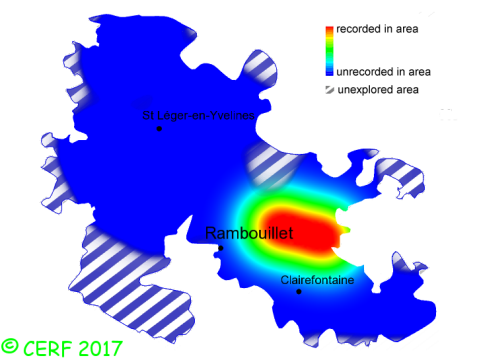| Amanita mairei Foley |
|
|
|
|
|
|
The cap is grey, with a central umbo; its margin is striate. The cap surface is smooth, not viscid nor sticky. The stem is smooth, with a white sheathing volva, without ring. The flesh is unchanging; its taste is mild; the odour is not distinctive; its texture is fibrous. The gills are white, free, crowded . The spore print is white. This species is mycorrhizal. It grows on the ground, in meadows and broad-leaved woods. The fruiting period takes place from June to November.
Distinctive features : grey cap, without umbo, often with white veil remains and a striate margin; white sheathing volva, often buried; in warm places Amanita mairei is rare and localised in the forest of Rambouillet, and is quite rare, more generally speaking . | ||
|
page updated on 14/01/18

